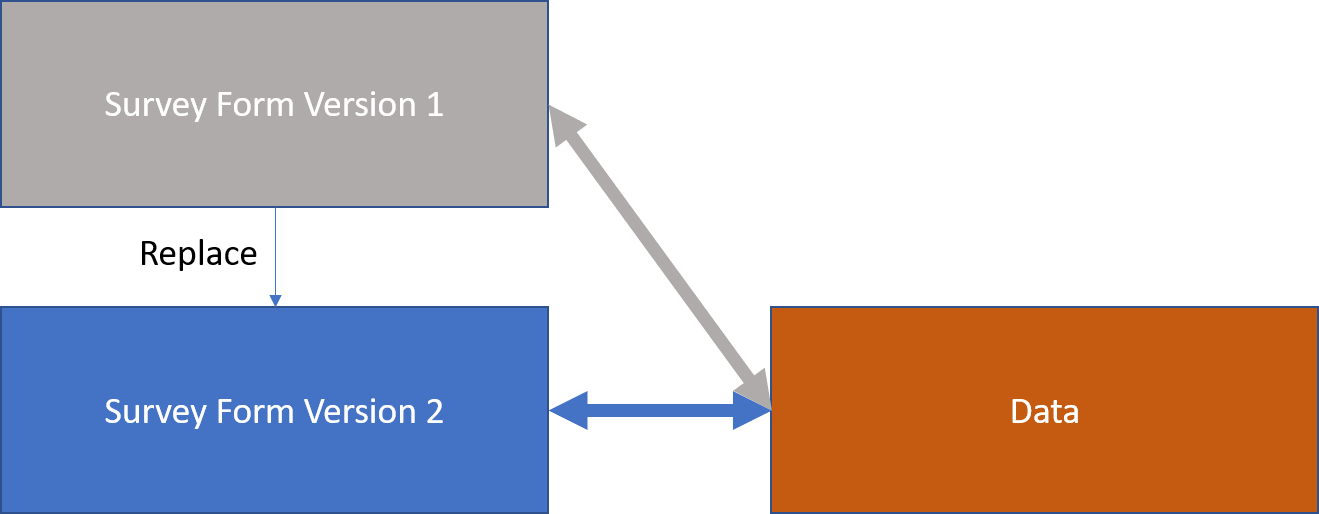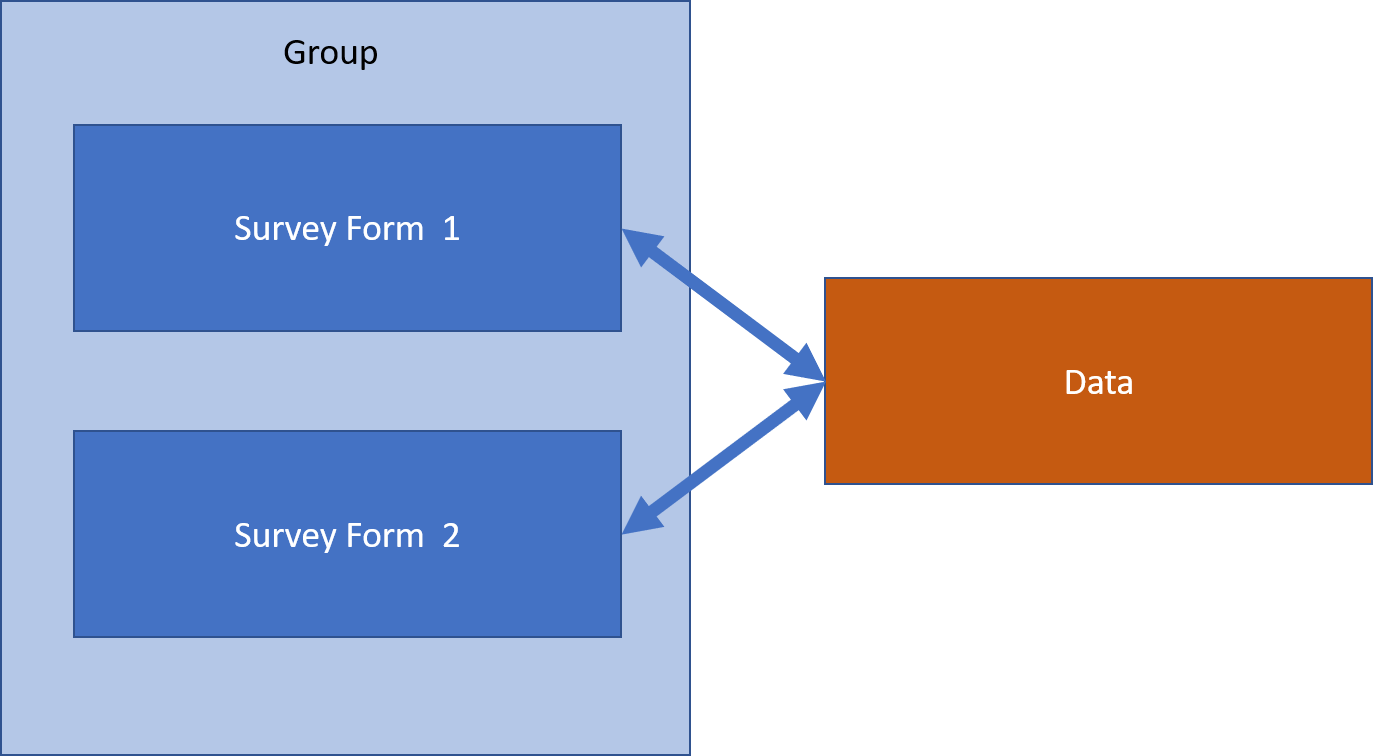Many Forms - One Table of Data
Single Form
When you load a new Survey Form on to the server a one to one relationship will be created between that form and its data. Each question in the form will have a column in the data table that stores its answer. If you load another survey, even one that is almost identical to the first, then a new data table will be created and the two sets of data will not be linked in any way.

Single form single data table
Data is more important
The above approach is as far as most forms based data collections systems go. However except in rare cases the data collected by a survey is more important than that survey and this data can exist and be used long after that survey has been forgotten. To preserve the data while changing the survey over time you can "replace the survey" or create "survey variants" that contribute to a single view of the data. These approaches are described below.
Replacing the Survey
In this scenario you want to change the survey over time. You might want to add, delete or change specific questions. You don't want to keep the old survey form but you do want to keep any data that was collected using that survey form.

Replace a survey
If you edit a survey using the online editor then you automatically replace the old survey. Alternatively, if you are using the XLSForm editor, then instead of uploading the changed survey press the replace button (Replacing Surveys).
None of the previously collected data is lost when you replace a survey. However if a question has been deleted then the data for that question will not be visible when you are doing analysis with the new survey. To see this old data then update the survey again and add the question back in.
Concurrent Survey Variants
What if you have multiple on-going data collections where the questions vary? For example data collected in camp B needs to have different questions than those used in Cmap A but you are still collecting a single table of data.
One approach to this is to use relevance. You can add the additional questions, make them only relevant if "Camp A" or "Camp B" is selected as the location and then replace the original survey with this new one.
Another approach however is to load multiple surveys that are in the same group and hence update the same table. This might be preferred to the use of relevance if:
The relevance rules would be complex
Temporary surveys are often being required and you don't want to constantly change the main survey
The survey variant is substantially different, possibly with only a fraction of the questions of another survey

Group Surveys
The following video walks through an example of using this approach in a scenario where two survey variants are used to collect a single set of data at two camps.